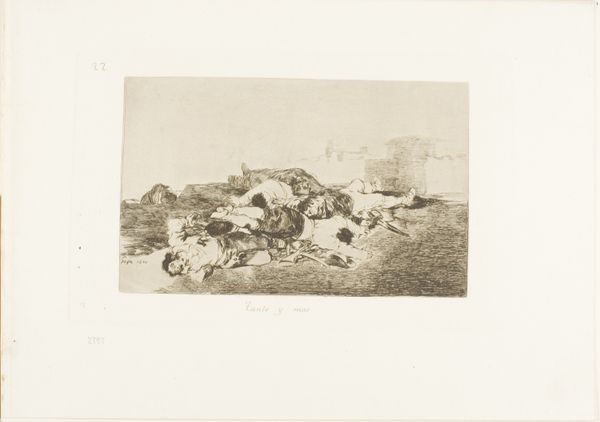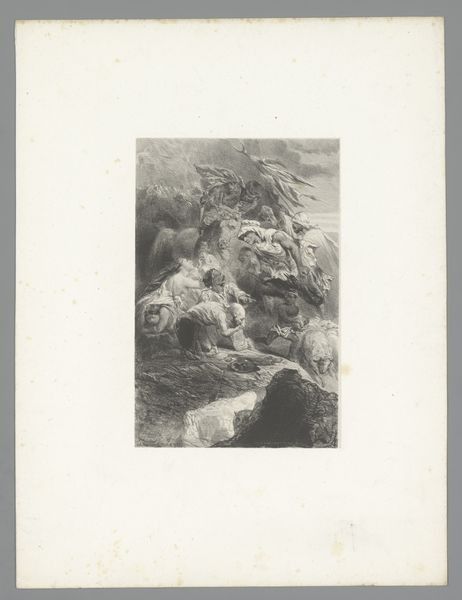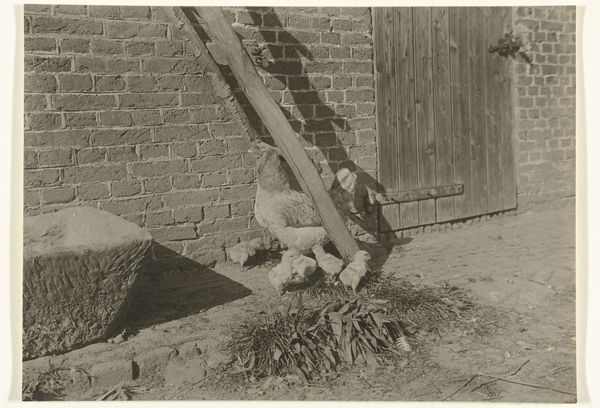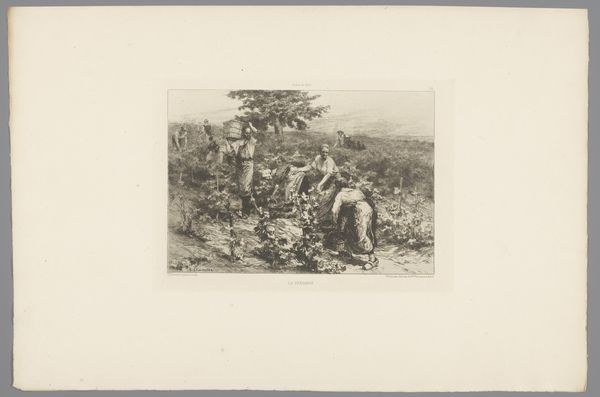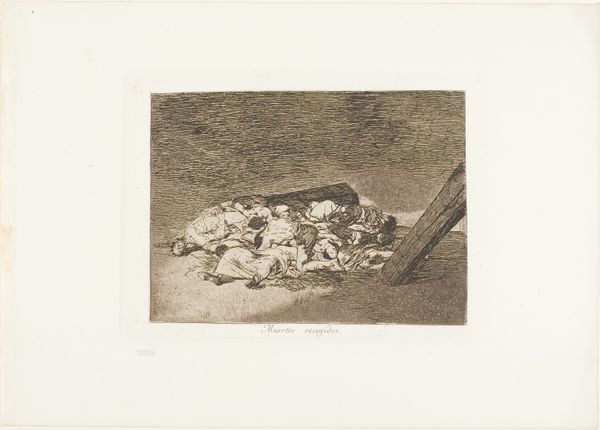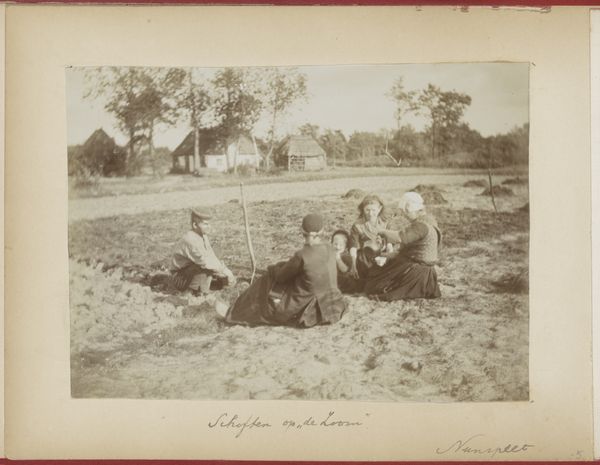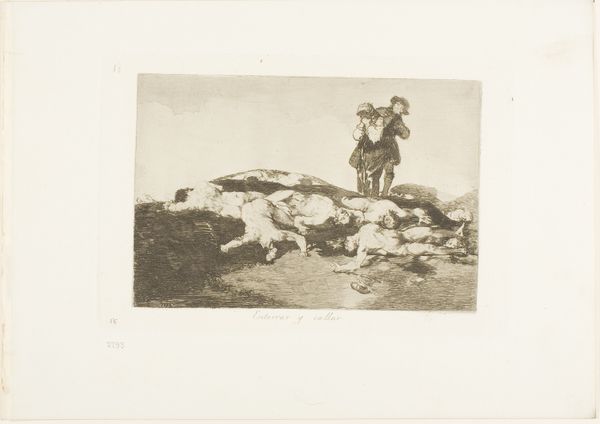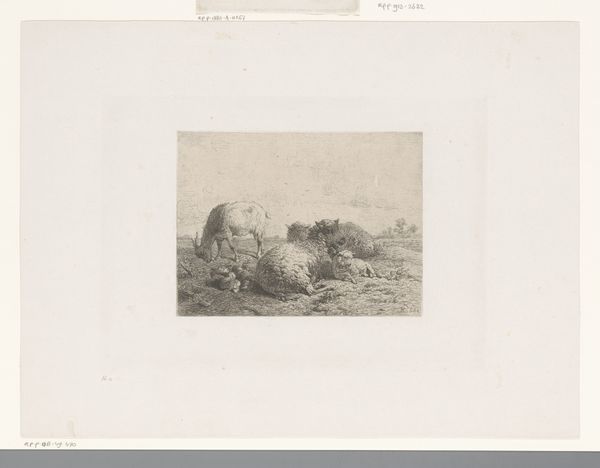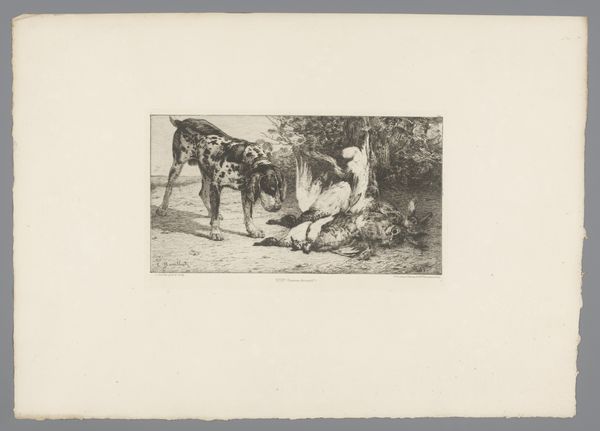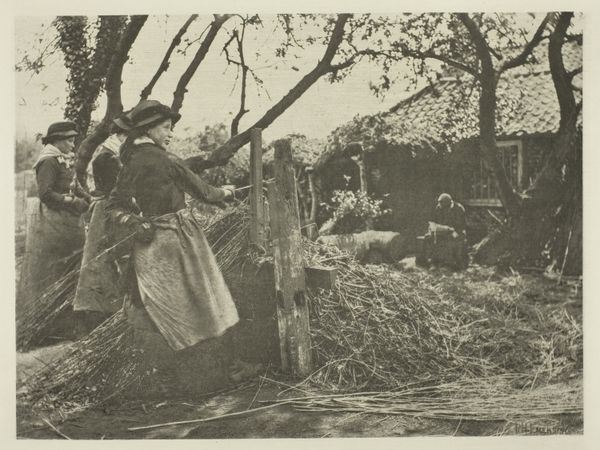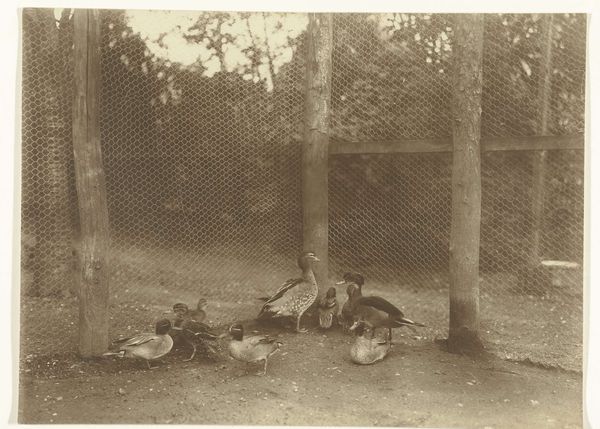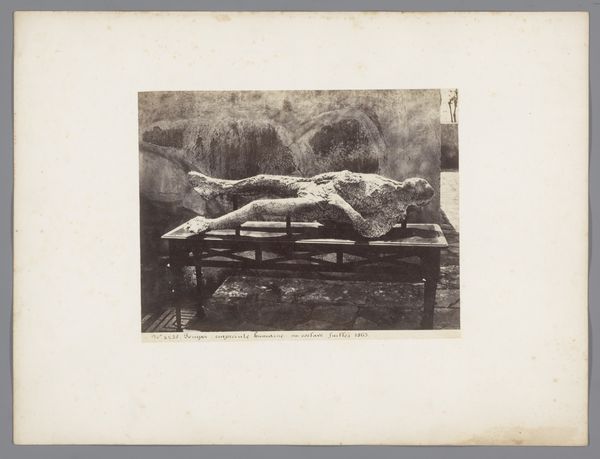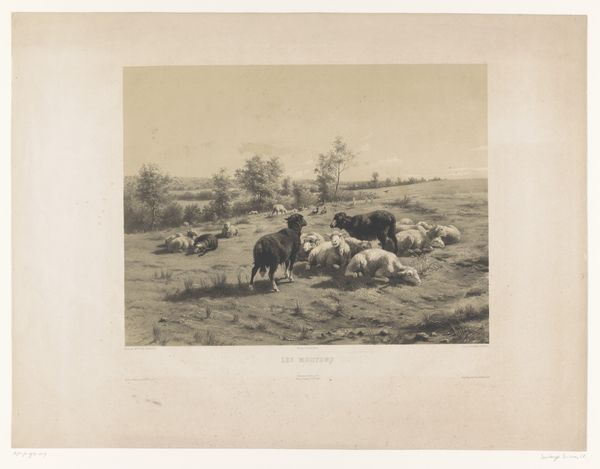
print, etching
#
dutch-golden-age
# print
#
etching
#
landscape
#
genre-painting
#
modernism
#
realism
Dimensions: height 174 mm, width 227 mm
Copyright: Rijks Museum: Open Domain
Curator: This print, entitled "Den moestuin," or "The kitchen garden," is an etching by Jacob Simon Hendrik Kever, likely created between 1864 and 1911. It's a beautiful example of late 19th-century Dutch realism. Editor: My first impression is one of quiet toil. It feels very grounded, literally, with the hunched figure working among those enormous cabbages. There's a somber mood evoked by the dark inks, a feeling of laborious necessity. Curator: Yes, that hunching posture is so significant! Bent over, nearly anonymous in the earth, the figure is visually yoked to the cyclical, laborious realities of agrarian life, something deeply embedded in Dutch visual culture since at least the 17th century. Even her garments seem to fade into the garden’s earthy tones. Editor: Absolutely. Look at the details, or lack thereof. The face is obscured; we focus on the physicality of the labor. You can almost feel the weight of those tools, see the strain in her back. And the garden itself is built—layered and worked. The simple materials in use give testament to its creation, a testament to a whole way of life centered on that cyclical toil. Curator: And consider what the kitchen garden itself represented: sustenance, but also self-sufficiency. There's an underlying symbolic weight, resonating with the historical Dutch emphasis on independence and resourcefulness against external pressures. Editor: I also can’t help but think of the material and class implications embedded in depicting that daily labor. Kever’s choice of etching allowed for accessible multiples, democratizing an image of work rarely considered ‘high art’. By showcasing the everyday, Kever validates a population otherwise easily dismissed. Curator: The criss-crossed woven structure of the distant fence acts as a compositional counterpoint to the flowing organic shapes in the garden's lower register, echoing that tension between labor and rest inherent in agrarian life. Editor: The textures Kever creates through etching mimic the feeling of the materials involved in tending that plot. It really brings a rich material consideration to this seemingly simple work. Curator: Indeed, seeing her bent back framed within those rows and within a medium made accessible highlights the essential symbolic connection between people, earth, and survival. Editor: I agree; a work rooted not just in soil, but in material reality and an undercurrent of social consideration.
Comments
No comments
Be the first to comment and join the conversation on the ultimate creative platform.
